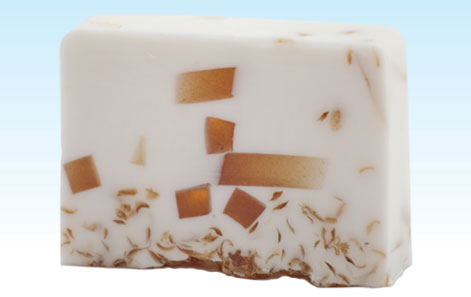Glycerin Soap on:
[Wikipedia]
[Google]
[Amazon]
 Glycerin soaps are
Glycerin soaps are
 Glycerin soaps are
Glycerin soaps are soap
Soap is a salt (chemistry), salt of a fatty acid (sometimes other carboxylic acids) used for cleaning and lubricating products as well as other applications. In a domestic setting, soaps, specifically "toilet soaps", are surfactants usually u ...
s that contain glycerol
Glycerol () is a simple triol compound. It is a colorless, odorless, sweet-tasting, viscous liquid. The glycerol backbone is found in lipids known as glycerides. It is also widely used as a sweetener in the food industry and as a humectant in pha ...
, a component of fat or oil. They are recognizably different from other soaps because they are translucent. The clarity is due to the alignment of the soap molecules, which can be induced through the addition of alcohol and sugar. This is usually done for homemade glycerin soaps that are not remeltable.
The process for making glycerin soaps was well known as of 1857 in the Western world. In modern industrial soap-making, the glycerin is usually separated from the soap to be resold and used in a wide variety of areas such as for personal care products, pharmaceuticals, chemical intermediates, and food processing.
Production
Glycerin soap is made by melting and continuously heating soap that has been partially dissolved in a high-percentage alcohol solution until the mixture reaches a clear, jelly-like consistency. The alcohol is added to a slow cooked hot-processed soap and then simmered with a sugar solution until the soap is clear or translucent, and then the simmered soap is chilled in a freezer. With home- and hand-made soaps that still contain glycerin left over fromsaponification
Saponification is a process of cleaving esters into carboxylate salts and Alcohol (chemistry), alcohols by the action of aqueous alkali. Typically aqueous sodium hydroxide solutions are used. It is an important type of alkaline hydrolysis. When the ...
, the grating, melting and cooking can proceed without the addition of anything to the mixture, though sugar
Sugar is the generic name for sweet-tasting, soluble carbohydrates, many of which are used in food. Simple sugars, also called monosaccharides, include glucose
Glucose is a sugar with the Chemical formula#Molecular formula, molecul ...
or more glycerin is sometimes added. Glycerin soap can also be produced without remelting soap through directly cooking raw home-made soap.
Modern clear glycerin soaps bases are produced by combining various glycerol
Glycerol () is a simple triol compound. It is a colorless, odorless, sweet-tasting, viscous liquid. The glycerol backbone is found in lipids known as glycerides. It is also widely used as a sweetener in the food industry and as a humectant in pha ...
and polyol
In organic chemistry, a polyol is an organic compound containing multiple hydroxyl groups (). The term "polyol" can have slightly different meanings depending on whether it is used in food science or polymer chemistry. Polyols containing two, th ...
s with soap and other surfactant
Surfactants are chemical compounds that decrease the surface tension or interfacial tension between two liquids, a liquid and a gas, or a liquid and a solid. The word ''surfactant'' is a Blend word, blend of "surface-active agent",
coined in ...
s in a manner similar to traditional glycerin soap-making methods. These modern clear soaps have the benefit of being easily re-meltable and are often sold in bulk to customers for melt-and-pour soap crafting.
See also
* Vegan soapReferences
{{DEFAULTSORT:Glycerin Soap Soaps